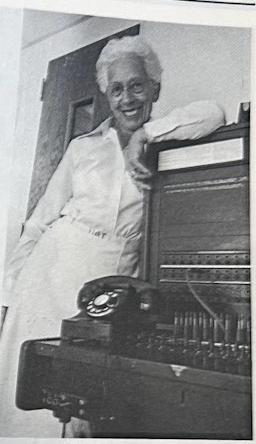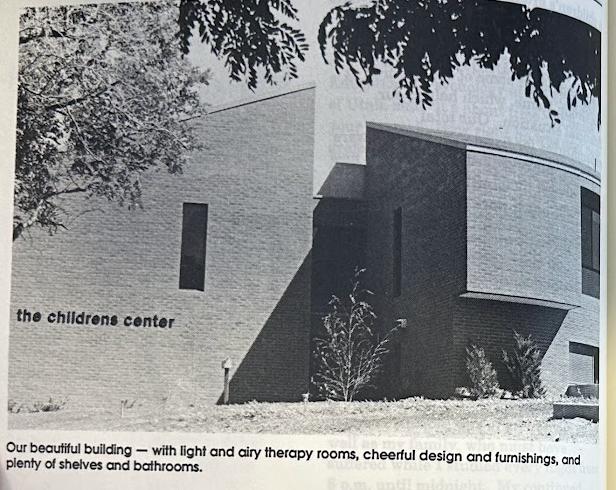Agnes Plenk
Agnes Plenk, affectionately known as Agi, was born in 1916 in Budapest, Hungary. However, most of her childhood was spent in Vienna, where she remained until the late 1930s. Plenk and her significant other were forced to flee Vienna after Nazi invasion in 1938. Eventually settling in Chicago, Agi attended Northwestern University and earned her BA in psychology in 1945. Agi then decided to stay and teach, earning her MA in clinical psychology in 1947. When she and her husband moved to Utah in 1947, Agi founded the Holladay Community Church Preschool Center- what would eventually form the framework for the Children’s Center known today. Eventually, Plenk decided to get her PhD in educational psychology in 1967. Agi worked at the Children's Center, founded in 1962, as the Executive Director and Chief Psychologist until 1986. From there, she transitioned to being the Clinical Director, Director of Training, while continuing her role as Chief Psychologist. Finally, in 1987, Agi decided to retire and stay on at the Children’s Center solely as a consultant.
The Children's Center
Getting started:
In the 1950s, preschools were not widespread across Utah. Instead, children stayed home with their mothers, as education was considered a woman’s role. Their education was primarily based on the teachings of the Bible and other religious doctrines. When Agi and the Protestant church started their preschool in 1953, as with any new idea, it was met with hesitation. However, Agi and her colleagues decided to integrate parents into their children’s educational journey. This meant that parents could attend monthly meetings to talk about their child’s educational experience. Arguably more important, however, were the support systems parents developed through these meetings.
In early childhood education, children with mental health conditions, learning disorders, and/or developmental delays were unable to attend public schools until the age of 9. This policy stemmed from the belief that these children functioned at a level lower than their peers, therefore, they were held back. This meant that some 9 year old children were put in first grade with 6 year old children. Furthermore, the Children's Center reported that 10% of all preschool children needed psychological help. The need for a specific program that targeted early intervention and support for children with different abilities was clear. In order to address this need, Agi and the Holladay Community Church piloted a summer program for 12 children. After early successes with this program, several more began to commence for children ages 3-9. By 1962, it was decided to expand and form a non-profit organization providing interventions for children who could not enter a traditional school setting.
Up & Running:
The Holladay Children’s Center– an independent, private, non-profit agency– was officially founded in 1962. The center focused on early targeted interventions, thus, each student received a psychological assessment and family study. After these two steps, the center’s therapeutic team and the child’s parent were able to build a treatment plan for the child. This buy-in of the parent was important, as parent participation was and is crucial in any early childhood intervention. Parents could attend weekly sessions where they could discuss their personal needs as it pertained to their child’s behavior and intervention. Children enrolled at the center were assessed on many different levels, including their gross motor skills, fine motor skills, their expressive language (e.g., ability to express ideas, ability to convey needs, etc.), receptive language (e.g., understand verbal directions, can engage in long stories, etc.), environmental adaptation (e.g., explores the classroom, can complete tasks when prompted, ability to tolerate new experiences, etc.), and social relations.
A typical day in the life of a child at the Children’s Center started at 7:40am, when buses left to pick children up and bring them to the center. By around 9am, the center is bustling with kids. Staff and volunteers work with the children on a variety of activities, whether that be painting, playing with blocks, reading books, or solving puzzles. Throughout the morning, children are pulled from classrooms to attend individual therapy, speech therapy, and other sessions. At around noon, a different group of kids arrive and the current group leaves for daycare or home. Though the new kids are slightly older, they still have needs similar to the younger group. Therefore, the afternoon functions almost identically to the morning- kids play in their classrooms, learn skills, attend different therapeutic sessions, and treatment plans are executed. At 3:15pm, this group of slightly older children leave for home. However, the day is far from over. Instead, elementary aged students arrive to continue on their treatment plans- a sort of outpatient treatment program design. At 5:30pm these kids depart for the evening. Parenting groups are then conducted beginning at 7pm. Such a busy day was no doubt made possible by the staff and volunteers who spent countless hours with the children. Their hard work, however, paid off. Of the children treated by the center, 88.6% were able to enroll in the public school system. Clearly, the center was doing something right.
Legacy:
Plenk officially stepped down at the end of the year in 1986. Since then, the Children’s Center has continued to flourish. Today the center offers outpatient family therapy, group therapy, and a therapeutic preschool program. Currently, the center provides services for more than 1,200 kids and community members annually. However, all of this would not have been possible without Plenk’s dedication, care, and determination to create such an organization.
I am proud of the many people who have shown that they deeply care for children and their welfare– and I am confident the Center will continue to play an important role in the lives of many families.
- Agnes Plenk, PhD
References
The Children's Center. n.d. “Media Center.” The Children's Center Utah. https://childrenscenterutah.org/contact-us/media-center.
The Children's Center. n.d. “Our History.” The Children's Center Utah. https://childrenscenterutah.org/about/our-history. Spodek, B. 1996.
“Review of Preschool Education in America: The Culture of Young Children from the Colonial Era to the Present, by B. Beatty.” American Journal of Education 104 (3): 253-256. http://www.jstor.org/stable/1085646.
The Agnes Mero Plenk Papers, ACCN 1585, Bx 1, Fd 1. Special Collections, J. Willard Marriott Library, The University of Utah.
The Agnes Mero Plenk Papers, ACCN 1585, Bx 1, Fd 2. Special Collections, J. Willard Marriott Library, The University of Utah.
The Agnes Mero Plenk Papers, ACCN 1585, Bx 1, Fd 3. Special Collections, J. Willard Marriott Library, The University of Utah.
The Agnes Mero Plenk Papers, ACCN 1585, Bx 1, Fd 13. Special Collections, J. Willard Marriott Library, The University of Utah.
The Agnes Mero Plenk Papers, ACCN 1585, Bx 1, Fd 14. Special Collections, J. Willard Marriott Library, The University of Utah.
The Agnes Mero Plenk Papers, ACCN 1585, Bx 4, Fd 5. Special Collections, J. Willard Marriott Library, The University of Utah.
The Agnes Mero Plenk Papers, ACCN 1585, Bx 5, Fd 9. Special Collections, J. Willard Marriott Library, The University of Utah.
Page researched and written by Josie Hahn.
Later edited by Pamalatera C. Fenn




